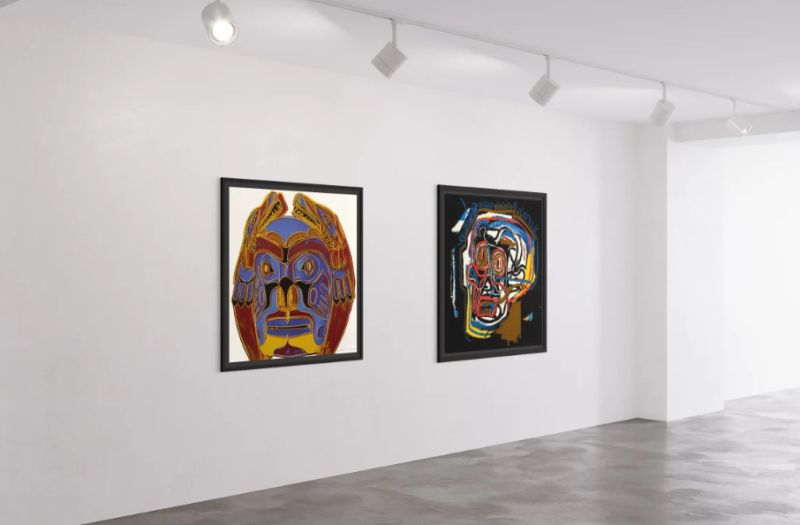The world of art is a universe of diverse expressions. It’s a vibrant dance of colours, textures, and emotions that transcend the tangible and enter the realm of the ethereal. Yet, amid the chaos of creativity, there’s a force that pulls together distinct pieces to form a meaningful whole. This force is known as Art Curation, a critical element in shaping the world’s artistic narrative. As art curators, the maestros of this process, meticulously weave together diverse artistic expressions, they craft cohesive collections that tell compelling stories, incite conversation, and inspire awe.
The Role of an Art Curator
Art curators have one of the most influential roles in the art world. They are storytellers, interpreters, and visionaries, each taking on the responsibility of shaping the way we perceive and interact with art. Beyond selecting and organising art pieces, they design experiences. This involves developing themes and narratives that bring a collection to life, encouraging the viewer to engage in a deeper dialogue with the artwork. Their roles also extend to educational programming and collaboration with artists. The Tate Gallery in London, for instance, acknowledges this as the curator’s role in “the acquisition and care of objects”.
Understanding Cohesion in Art Curation
The term ‘cohesive’ often brings to mind notions of similarity or uniformity. However, when it comes to art curation, the concept of cohesion is about more than just commonality. It’s about connecting disparate elements through an underlying thread of thought, feeling or idea. A cohesive collection could showcase a variety of art styles, mediums, or periods, yet they all align with the central narrative envisioned by the curator. This balance between diversity and unity can create intriguing dialogues within the collection and engage audiences on a deeper level.
The Art of Creating Cohesive Collections
To craft a cohesive collection, an art curator needs to understand the pulse of the art and the audience. This involves extensive research, keen observation, and an innate sensitivity to aesthetics and cultural nuances. In selecting the pieces, a curator might look for common themes, narratives, or techniques that align with their vision. Yet, cohesion is not merely about similarity; it’s about resonance. Each piece, though unique in its expression, should resonate with the overall message or emotion of the collection. This delicate balance of unity and diversity can create a profoundly impactful and immersive experience.
Navigating the Complexities of Art Curation
Art curation is not a linear process; it is a dynamic and iterative journey. Every collection is a new challenge, demanding a fresh perspective and approach from the curator. Navigating the complexities of this process requires a combination of technical knowledge, creative intuition, and cultural sensitivity. The curator must understand the historical and cultural context of the artwork, the artist’s intent, and the audience’s perception. They must also navigate logistical challenges, like the spatial layout and lighting of the exhibition space, to ensure that each piece is showcased to its fullest potential. Each of these considerations plays a crucial role in shaping a cohesive and engaging collection.
The Impact of Technology on Art Curation
The advent of digital technology has revolutionised the field of art curation. Today’s curators have a wealth of digital tools at their disposal, from virtual reality (VR) and augmented reality (AR) to big data and artificial intelligence (AI). These technologies can help curators research and visualise their collections in unprecedented ways. For instance, VR can be used to create immersive virtual exhibitions, allowing audiences to experience art in new and exciting formats. Meanwhile, AI can analyse vast amounts of data to uncover patterns and insights that can inform the curation process. However, even as technology transforms art curation, the human element remains vital. After all, it is the curator’s vision and insight that breathes life into a collection.
The Emotional Journey of Art Curation
Beyond the intellectual and logistical challenges of art curationlies an emotional journey. Every art curator embarks on a personal voyage with each collection they curate. The process of selecting and organising art pieces, of weaving together narratives and emotions, can be both fulfilling and emotionally taxing. There is a deep sense of responsibility towards the artists whose work they showcase, the audiences they engage, and the art itself. This emotional investment can often be seen in the resulting collections, adding a layer of depth and authenticity that resonates with audiences. As the art curator navigates this emotional landscape, they contribute not only to the art world but also to the broader cultural narrative.
Art Curation: A Continuous Learning Process
The field of art curation is constantly evolving, shaped by social, cultural, and technological changes. This makes it a continuous learning process for art curators. Whether it’s exploring new artistic movements, keeping abreast of the latest digital tools, or understanding shifting audience demographics and preferences, curators must remain lifelong learners. This constant growth and evolution are essential for curating collections that resonate with contemporary audiences and contribute to the ongoing dialogue in the art world. As curators navigate this dynamic landscape, they continue to enrich our collective artistic experience.
In Conclusion
Art curation is a symphony of creativity, intuition, and intellect. It is a fine art in itself, one that shapes our collective artistic experiences. The art curator, the conductor of this symphony, holds the baton that harmonises the individual notes into a grand composition. By understanding the essence of each piece and weaving them together with a powerful narrative, they craft cohesive collections that inspire, provoke, and mesmerise. These collections, much like the notes in a symphony, are unique in their individuality but united in their purpose – to create a transcendent artistic experience. As we engage with these collections, we too become part of the symphony, our perceptions and emotions adding new layers to the rich tapestry of art.
Article Submitted By Community Writer


